Is a personal spaceflight or zero-g experience on your Bucket List? If so, how do you prepare for this once-in-a-lifetime event? How can you get the most out of your flight and create a lasting memory?
With several commercial spaceflight companies preparing to launch suborbital tourist flights within the next several years, leaders from the industry predict more people will fly to space in the next decade than have made the journey so far since the dawn of the Space Age.
At the International Symposium for Personal and Commercial Spaceflight (ISPCS) in October, 2008 in Las Cruces, New Mexico, a few “seasoned” space flyers provided advice for those hoping to get astronaut wings, or at least experience what zero-gravity feels like. Former astronaut Dan Barry and Peter Diamandis, the Zero Gravity Corporation CEO and co-founder of Space Adventures, shared their experiences and offered a list of tips on how to get ready to fly in space.
1. Train for the physical experience:
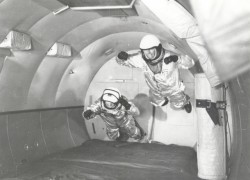
Both Barry and Diamandis said training is essential. NASA astronauts train for about two years before they can be assigned to a flight. Space Adventures has a three-to six month training regimen for orbital flights, and Virgin Galactic requires three days of pre-flight training. Even Zero-G has a short orientation before their parabolic flights.
“You want to eliminate every single experience that doesn’t have to do with space,” said Barry. So, if you’re going on a space flight, first take a zero-g flight to know what zero gravity feels like and how your body might react. Some people get nauseous; some aren’t affected. If there’s the possibility of getting sick, you’ll want to know how to deal with it in zero-g.
Centrifuge training is also encouraged to provide the sensations of G-forces at launch. “You don’t want to be overwhelmed by the experience,” or only remember that you were scared or freaked out, said Barry. “You don’t want that memory to erase your zero-g experience, that unique $200,000 experience you’re having.”
2. Plan for what you want to do on the flight:
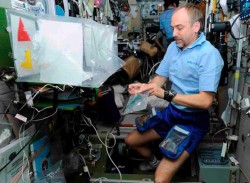
Plan the things you want to do on your flight and make sure you have the time to do them. Richard Garriott just returned from his trip to the ISS, and he had several experiments planned and a regimen of things he wanted to accomplish. You don’t want to return from your flight and be disappointed you didn’t have the time or opportunity to do all the things you wanted, or that you forgot to something you had planned. You might not get the chance to do it ever again.
3. Get to know the people you are going to fly with:
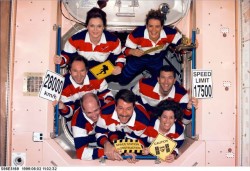
Barry said the most important part of preparing for spaceflight is knowing who you’re going to fly with. “You have to be able to trust your lives with each other,” he said. You’re also going to have a lot in common with your fellow space flyers. “Obviously, you’re all nuts to be doing this,” Barry laughed. “You’re going to meet people who are just as passionate, just as thrilled, and just as motivated as you are. These are the people you’re going to share this experience with. Make them your friends.”
So, now you’ve completed pre-flight training and you’re ready for your flight. Perhaps the most important advice Barry and Diamandis provided is what to do during your flight.
4. Make a memory.
“You really want to focus on the things that are unique about the spaceflight and take time to experience the moment,” said Barry. He stressed this advice isn’t unique to people going on short duration spaceflights, but any time people have the opportunity for a once-in-a-lifetime experience, they should take the time to step back, take a look at where they are and what they are doing and “cement” that moment in their minds.
Barry said several astronauts took him aside before his first spaceflight and told him the same thing. “Astronaut Tom Akers told me, ‘I don’t want what happened to me to happen to you. I did four spacewalks, and in the course of those space walks I never once looked at Earth. I don’t have any memories from being in space. You need to take the time to look down at the Earth and look where you are.'”
Another astronaut, Bob Cabana told Barry “Take time to make a memory. At multiple points in the flight, stop and cement those things into your memory.”
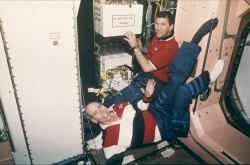
“And so I made sure I did that, and these are the things I’ll always have with me,” Barry said as he relayed one of his memories, a moment from his STS-96 flight in 1999 that he shared with Rick Husband, who was later killed in the Columbia space shuttle accident. “Rick was up on the flight deck, and he hollered, ‘Yo! Dan! You have got to come up here right now!’ Rick is looking out the window at the southern tip of South America, and there below us is an undulating ribbon of neon light. It was the Aurora Australius. And it was just gorgeous. I took a minute to look at Rick and look out the window. I am so grateful now for that memory,” Barry said with his voice breaking slightly. “It will be with me for the rest of my life. So, when you’re up there, take the time to cement a memory in your mind. Stop taking pictures, stop playing with the juice ball and just cement the moment.”
Diamandis agreed, and said the same is true for a Zero-G flight. “Take one zero-g parabola (there are 15 for each Zero-G flight) and do nothing, and I guarantee it will be the single memory you take away from the experience, where you’re not trying to gobble down M&M’s or something. Just float through the cabin, or if you’re with a loved one, wrap your arms around each other and just experience the moment. It’s like no other experience you’ve ever had.”
5. Plan for your post-flight experience, too.
Barry said, “When you get off the flight, and even if you have some memories locked in, it’s very possible you’ll say, ‘Is that it? Is it over?'” Post flight can be a severe let-down after the anticipation leading up to the experience. Barry said many first time flyers at NASA had significant psychological issues after their flight.
Barry and Diamandis stressed it’s important to have something planned post-flight to celebrate your experience. “It’s vital to have something positive planned so it’s not just over,” Barry said.
NASA astronauts usually tour the country after their flight to share their experiences. If you’ve just shelled out a huge chunk of change for your space flight, a world tour might not be possible. But share your experience with others. Show people your pictures, talk about what you felt, saw and experienced.
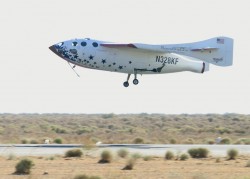
And remember those people you just flew with that you took the time to get to know? “Schedule reunions,” said Barry. “We always do, for sure.”
“This is something you’ve wanted to do your whole life,” Barry continued. “Don’t just make it a five minute experience. Training encompasses so much more than just being physically ready to fly. Make sure you’re ready psychologically, too, and that requires thinking about what you’ll do afterwards.”
Will this experience change you?
Barry said the question he gets asked the most is, does spaceflight change a person – do space flyers experience the “Overview Effect” of seeing their life and the world in a new way?
“For one thing, just having your personal childhood dream come true changes you,” he said. “Seeing the earth from above the sky gives you a new perspective.” Barry said what impressed him the most was the thinness of the atmosphere, and how events in one part of the world can affect another. “You can see smoke from Amazon fires go all the way to Hawaii; there are dust storms that go across the world,” he said.
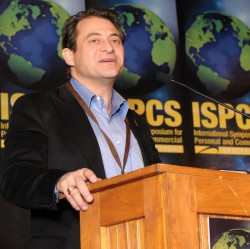
Additionally, if you’ve been on an orbital flight where you’ve been in zero gravity for several days, it will take your body several days to re-acclimate to gravity again.
“When I got into orbit, I adjusted just fine,” said Barry. “Within 10 minutes you learn how to get around the cabin, no problem. Soon, you’ve learned a new sport, which is flying. It feels like you have a magic power!”
But coming back to Earth is different. “After coming home, three days later I was still walking into walls. Your body changes, you get used to zero-g very easily, but adapting to Earth again is hard.” Barry said he forgot about having to put items down – he expected them to just float. “Spouses are told not to hand a baby to an astronaut who has just returned from space,” he said, quite seriously.
So, are you ready to go on a flight to space? Virgin Galactic has over 200 people signed up for their suborbital flights, and they hope to make their first tourist flights in 2010. Other companies like XCOR and Rocketplane hope to fly around that time frame, as well. Space Adventures has taken six tourists so far to visit the International Space Station, and the company is even taking reservations for an orbital flight to the moon. But even if you don’t have $200,000 in spare change for a suborbital trip or $35 million for a ride on a Soyuz rocket to the space station, you can experience a zero gravity flight on board the Zero-G aircraft for about $5,000.
For more information, check out these links to various personal spaceflight companies:
Zero-G
Space Adventures
Virgin Galactic
XCOR
Rocketplane
SpaceX
Or, if you want to do it the old fashioned way, here is the NASA astronaut application form.

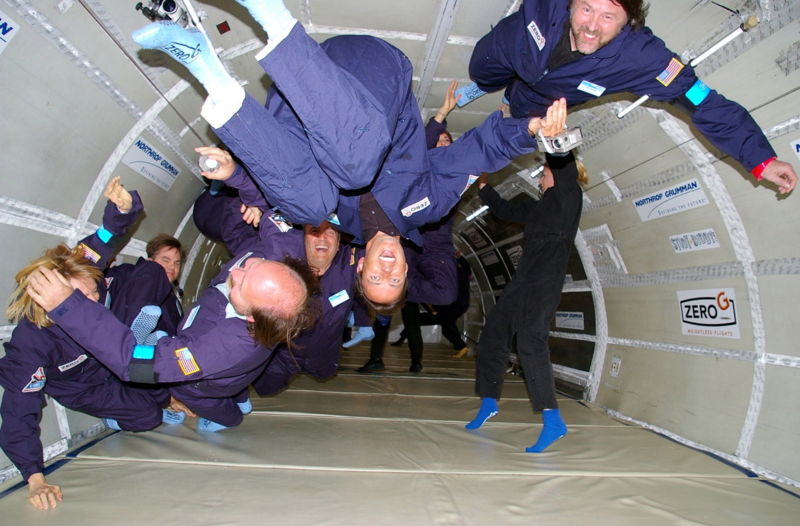
I can’t wait till it comes down from 200,000 to around under 50k. That’s when I’ll go.
It is good that I have such a great visual and physical imagination for I will never be able to in the least dream of the cost. As a child I dreamed of being like a great bird and being able to leap and fly high over well known territories (that I may or may not have seen arial photos of) and even as an older adult I hold fast to these memories. This was not the same, but even though just childhood fantasy, it was close! Best wishes to those who go, and yes, find great memories and hold them tight! 😀
My fascination with “space” started at a very early age…ok…I admit it, I am a Trekkie. In the Star Trek movie “Insurrection”, Picard was asked if there was ever a moment in his life where time just seemed to stand still and after thinking about it for a moment he replied “the first time I saw my home planet from space”. To me, this is what this article is all about.
Here after my 43 years of life I still dream of this experience. The truth of the matter though is that I will probably never get to do anything like this in this lifetime (we’ll just have to see if there’s an “after-life” and if so, what that holds) so the one thing that I would like to add to this article that I feel was left out is; for those who are fortunate enough to get to do this, cherish every last second of it! For every single person who gets to experience this type of wonder, there are tens of thousands of us who will only know it in our dreams. Please…count your blessings and don’t take even the smallest aspect of this experience for granted. If you do get to go into orbit, look at our little blue world and know how truly small, fragile and precious it is and then help others to understand what you have experienced.
Peace
Jim
If 30 secs-1 minute of weightlessness will satisfy one’s urge, there’s a MUCH quicker, cheaper, simpler, easier (and, yes, SAFER) way: go to your nearest drop zone and do a skydive! You can usually go solo or tandem, train and jump the same day (I’ve seen people boarding a plane with their tandem jumpmaster *15 minutes* after they were handed to me for training), for around $200-300. Video of the entire experience is available.
The vast majority say afterwards it’s the most intense experience they’ve ever had. Yes, including that. 😉
Excellent article! I’m looking forward to my trip (I expect to be able to do it in 20-25 years or so, depending on various variables). I’ll definitely keep all this in mind.
I’ve done skydiving and ZeroG. ZeroG was the best and felt like nothing I’ve ever experienced before. Freefall in skydiving is just lots of wind and cold while floating on board ZeroG is almost mystical. It is the closer I will ever be to being an astronaut.
ZeroG is the way to go and only about 4 grand. Your in the air for about 45 minutes, but come home with some outstanding memories.
Just don’t take the motion sickness pill they provide. It really isn’t needed and just makes you groggy.
Does anyone know how i can win coz im a 12 year old zero-g is my dream bu my family wil never be able to aford it and the norton competition well im too young!